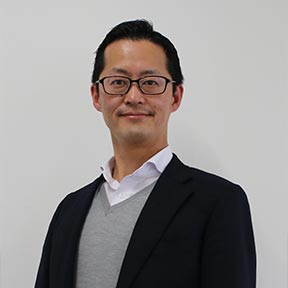2025.10.16

Dai Nippon Toryo reopens its Tokyo office.
Achieving more lively communication among departments and higher productivity

Dainippon Toryo has completed its Tokyo office renovation project and reopened with a casual, more organic environment featuring a flexible, free address workspace. Designed to overcome the silo mentality common at Japanese companies, what is the vision behind this new office?
Dai Nippon Toryo has reopened its Tokyo Office in Ota Ward, Tokyo. In preparation for its 100th anniversary in FY 2029, the company formulated its medium-term management plan “Vision 2029,” which includes “securing diverse talent and providing an environment in which they can achieve their best” as a materiality. A roundtable discussion (an informal meeting between management and employees) at the Tokyo office also revealed concerns about the aging office and difficulties in communication between departments and individual employees. This led to the launch of the renewal project. Mr. Naomichi Kohara of the General Affairs Section of the General Affairs Department, who led the Office Renewal Project Bureau, explains as follows:
“We’ve been tenants here for over 30 years. The Tokyo Office serves as our primary sales hub, and approximately 80 staff members work there. However, no interior renovations had been undertaken before, and the furniture and equipment had never been updated. Following requests for a better office environment during the roundtable discussions, we decided to renovate, and we reopened in October of 2024.”
Lively Communication with Other Departments to Enhance the Employees’ Sense of Belonging in the Workplace

With tables and counter seats randomly arranged, the new workspace has an open atmosphere instead of the typical office feel.
What are the main features of this renovation? First and foremost, it incorporates an activity-based working (ABW) workstyle, which is designed to encourage interaction between employees. ABW is based on the concept that employees should choose where they work. Instead of a traditional arrangement with assigned cubicles, ABW offices allow employees to choose their workplaces depending on their tasks at hand. The goal is to create an environment that sparks innovation through lively interactions across organizational boundaries.
Kohara continues: “The default arrangement is free addressing. It allows employees to sit and work wherever they like, so that communication between employees will increase. However, not all areas are allocated free address space; there are fixed seats in the administrative and order management departments to facilitate their work. On the other hand, we didn’t designate separate offices for the president or executives to create an environment in which employees can speak to them more easily, regardless of their position.”
Miki Kanai, who also worked on the office renovation project in the General Affairs Division of the General Affairs Department, joins the conversation:
“We asked mostly young and mid-career people to come up with ideas and lead implementation. They were encouraged to take full advantage of the free address system and interact with other departments. Even mid-career and senior employees, who initially struggled to adapt to flexible seating, are increasingly realizing its benefits.
The new office has a style reminiscent of a living room, and the entire space is designed to enhance employee satisfaction.
“Our aim is to increase employees’ sense of belonging and connection to the workplace through providing an atmosphere styled on a living room style with a unique, casual interior,” explains Kanai. “A new workstyle is emerging now, where they freely choose their seats based on the task at hand and their priorities—whether it’s consulting with a supervisor or working alone.”

Meeting spaces with movable partitions have been added for quick discussions, along with individually partitioned meeting rooms
Free Addressing to Tackle Silo Mentality and Sectionalism Issues
The company had long neglected upgrading the environments of its offices. Only the Osaka headquarters underwent renovation in 2019, when it relocated from a 60-year-old company-owned building.
“As we have focused on investing in human resources in recent years, improving the workplace environment has become of vital importance,” says Kohara. “From a recruitment standpoint, an attractive office space is an indispensable factor for securing future talent. So, after the headquarters renovation, Tokyo was next in line.”
In addition, the company has faced challenges from the silo mentality and strong sectionalism often seen in Japanese corporations. Business units are divided along product lines, resulting in multiple units separately approaching the same sales targets. Consequently, integrated proposals involving multiple products had to rely on the communication skills of individual sales representatives.
Therefore, it was essential to create a mechanism in the office environment that would boost interpersonal and cross-departmental interactions.
“With the new flexible seating arrangement, we can easily consult with people from other departments, even about minor things. We believe more opportunities for exchanges among workers have invigorated communications across departments,” says Kanai.


The break area is located at the center for ease of access and communication. (Left)
In the break area, the L-shaped sofa is styled after a living room and offers side-by-side seating designed for relaxation. (Right)
As for working from home, the company used to require specific conditions to apply for teleworking. The office overhaul has also led to relaxation of the restriction, allowing employees to telework up to twice a week without meeting any requirement to enjoy a more flexible workstyle.
“We can work anywhere we choose in the office and have good work-life balance,” adds Kohara. “We can choose our own workstyle from both aspects.”
Improvements to the office environment are welcome news for employees. It will increase their motivation and sense of belonging at their workplace.
“Simply having a clean, pleasant office makes us feel that the company values us and is investing in us,” continues Kohara. “We believe this office renovation has contributed to both employee communication and productivity. Our company will celebrate its 100th anniversary in FY 2029. We will continue to undertake various initiatives to make a comfortable working environment for our employees.”
INTERVIEWEES

Naomichi Kohara
General Affairs Section, General Affairs Department
Chief, Office Renewal Project Bureau

Miki Kanai
General Affairs Section, General Affairs Department
Member, Office Renewal Project
Dai Nippon Toryo Company, Limited
SR Bldg. Nagahori 1-18-11
Minamisemba, Chuo-ku, Osaka
Established in July 1929. The company engages in the manufacture and sale of coatings and inkjet coating systems, as well as the sale of various coating equipment and coating work. In 1936, it changed its name to Dai Nippon Toryo after an absorption-type merger with Asahi Lacquer Seisakusho, part of the Asahi Glass (now AGC) group. Known as “DNT,” it is a comprehensive coating products manufacturer with the leading share in the protective coating field, including bridges and plants. Its strength lies in integrated coating systems that reduce volatile organic compounds and the life cycle costs of infrastructure, leveraging the protective coating technology it has developed since its founding. It is listed on the Tokyo Stock Exchange Prime Market, and has 704 employees (2,496 on a consolidated basis).
